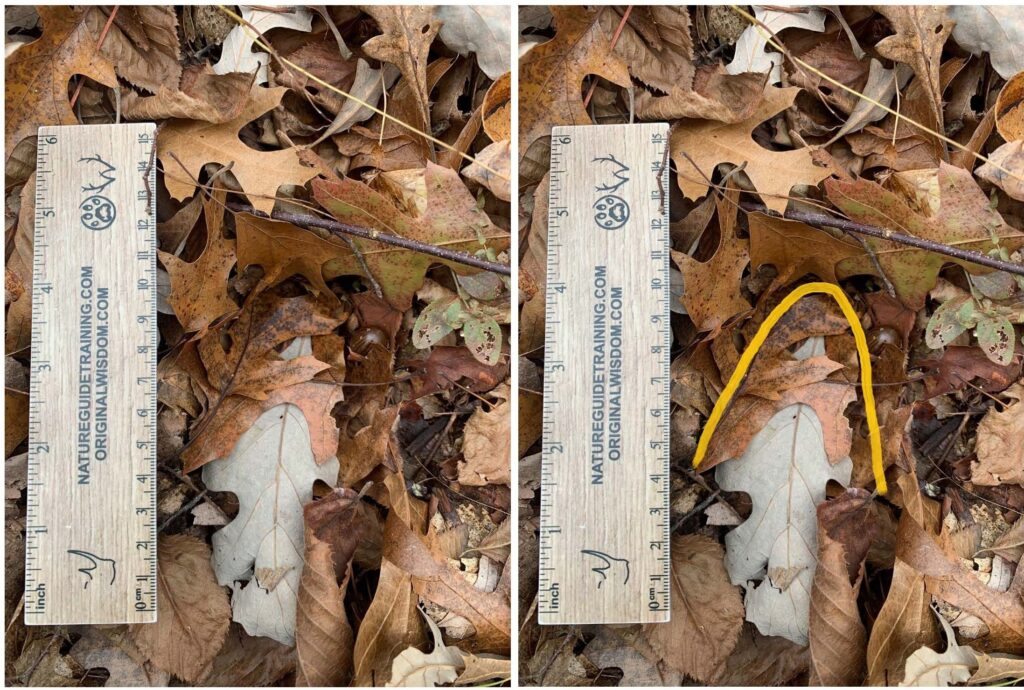This photo was taken near Siren, Wisconsin, at our annual Deer Trailing Workshop and CyberTracker Trailing Evaluation with North Winds Wilderness School and the Minnesota Tracking Project.

Jonathan Poppele (Tracker 2) and Blake Samuele Southard (Tracker 2) were present, and refrained from answering, but contributed with their great senses of humour. Annie Du-Pre Reynolds (Tracker 3), an American, living in South Africa, and a recent graduate of the Nature Guide Training 60-day apprentice-guide program and Original Wisdom’s South African Tracking Intensive, also contributed her humour. We do appreciate that, especially in these times where the world is a little crazy from Coronvirus and Covid-19.
Mark Apgar (USA), Elle van Dijk (Netherlands), Kim Cabrera (USA), Ray Hardy (USA), and Beau Harger (USA) also answered this correctly.
This is a white-tailed deer track in leaf litter. If you look closely, you can see the tip of the hoof, and the sharp edges, creating that upside-down “U” shaped impression in the leaves. We often see seer tracks (or other antelope tracks in South Africa) in sand and soil, and find them easily recognizable there, but it gets a little confusing when the substrate changes. As Mark Apgar says, “I see whitetail deer, but I honestly can’t explain why I see it.”
The photo on the right is the same as the one on the left, except I’ve outlined the edge of the hoof in yellow. We discuss Substrate Variation in Assignment 21 of the Tracker Mentoring Manual. Not only do tracks in leaves look different from those in sand or soil, but they also look different in each type of leaf litter, and it’s further complicated by how long the leaves have been on the ground. So, tracks in oak leaves will look different from those in beech leaves, and tracks in fluffy, new beech leaves will look different from tracks on flattened, old beech leaves. This is important to Spoor Recognition, which is an obvious aspect of Track & Sign identification, but it’s also an important aspect of Trailing, or Following and Finding animals. If the image, what we call the “sight-picture” of an animal’s track changes with every change in substrate, then we need to know that and anticipate these changes and be looking ahead for them as we approach them. This allows a tracker to keep momentum, which is one of the Ten Rules of Tracking (more on that another time).
Other articles you may find interesting:
- Introducing Tracker Mentoring! (And, Introducing The Tracks Of The Crested Barbet!)
- A Larval Beetle’s Trail